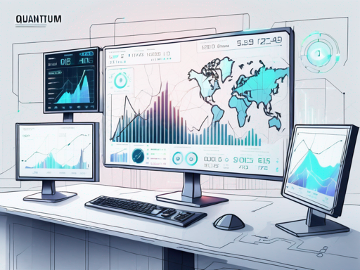As is custom, most gaming journalists normally write up some sort of list of their top favorite games. Mine here is a list of games I kept an eye on, or enjoyed particularly. Feel free to agree or disagree to your heart’s content in the comments section.
Table of Contents
Enter the Gungeon
A shiny gem of an indie title from Dodge Roll Games, that managed to win my heart over early on in the year. You the player take on the role of one out of four possible adventurers, and fight your way through five levels of the Gungeon dungeon. A massive randomly generated labyrinth filled with bullet-like henchmen and monsters that are all ready to take you down. Your performance for clearing the rooms on a floor gives you a money reward, and other possible goodies. Finding better weapons and items (or buying them from the shops that show up), is critical to your success. Every last inch of the game is filled with a Saturday morning cartoon sense of character that sets just the right tone for everything involved. The objective of the game is to forge a bullet to the past, where-in the player gets a chance to travel back in time to a pivotal moment in a particular character’s life, to fix the wrongs and regrets of their past. Gungeon stepped the awesome up even further by filling the game to the brim with unlockable secrets and tricks you can encounter and pull off. See a crack in the wall? Blow that sucker open to find some hidden treasure stashed away. Find a glitched out loot chest? It’s no accident. The developers put that in intentionally, for Gungeoneers seeking an unprecedented level of challenge culminating with a face off against two bosses at once.
Enter the Gungeon proved how indies can still pack a punch.
Pokemon Go/Pokemon Sun and Moon
This year was a celebration of Pokémon’s 20th Anniversary. Nintendo, Niantic, and the Pokemon Company breathed new life and interest into their classic Pokemon franchise, giving us two different types of gameplay experiences that brought new twists and turns to the series.
When Pokemon Go came out in July for iOS and Android devices, there was a massive wave of excitement for the potential of the concept. Players finally had a chance to travel around the real world and capture Pokemon via an augmented reality sort of setup. It shot up to the top of the App Store charts because of the fact it was every Pokemon lover’s dream come true. The development team at Niantic didn’t expect that, and their servers faced a consistent level of overload and outages for the first couple of months. On top of that, Pokemon Go related accidents began to pop up, leading Niantic to add warnings and other changes to the game to curtail chances of injury in the future. Altogether, coupled with the slow response to fixing the Pokemon tracking feature, turned a lot of that initial playerbase off. But Pokemon Go came back for a second wind towards the end of this year when they added holiday related updates to the game for a limited time, as well as bringing in some second generation pokemon.
That second wind in Pokemon Go was just in time for Pokemon Sun and Moon‘s debut. During most of this year, the news and reveal coverage for the new adventure in the tropical region of Alola dominated Nintendo’s news feeds. This game location did away with the classic approach and formula that the previous six generations followed. Instead, the player takes on the island challenge, where they must travel to the lairs of the Kahunas and Totem Pokemon and pass whatever tests they are tasked with. Along the way they meet new Pokemon exclusive to the area – in addition to familiar faces from the Kanto region who’ve adapted to the warmer climate of Alola. The bad guys came in the obvious form of Team Skull, a group of scandalous thugs that weren’t exactly the brightest bulbs in the box. But it turned out they were under the control of the Aether Foundation, whose motives weren’t as clear. Together, they made for an original and riveting story that’ll stand out for years.
Pokemon Go/Pokemon Sun and Moon proved they haven’t run out of ideas yet.
Dishonored 2
Bethesda had to raise the bar they set for themselves in the first place with the original Dishonored. How could the team take the premise and find some way of improving on that? The result was Dishonored 2 – a game where Emily Kaldwin and Corvo find themselves ousted from Dunwall after a coup by the evil witch Delilah ends up with her usurping control. Traveling to the shores of Karnaca, the player’s mission in the sequel was to hunt down the conspirators that schemed with her. The original Dishonored wasn’t a lengthy title, but the levels themselves were packed with options and opportunities for the player to explore as they saw fit. The second game kicked things up a notch by offering new powers (in the case of Emily Kaldwin), the ability to spend cash at Black Market shops mid-mission, and a more complex and fleshed out combat system that was better at telling the player what’s going on. What made Dishonored 2 go the extra mile to impress was the creativity in two of the levels: the Clockwork Mansion kept gamers on their toes as they had to outsmart Kirin Jindosh who was building a robot army, and Stiltons Manor had the player get to the bottom of the otherworldly corrupt magic that gripped the area by jumping back and forth between the past (the night where Stilton fell to insanity) and present. Overall, the sequel didn’t lose the spirit of wonder and steampunk fantasy that the original introduced people to.
Dishonored 2 proved Bethesda can make lightning strike twice.
Final Fantasy XV/The Last Guardian
These two games managed to finally come out in 2016, after they both underwent a nearly decade-long process of development at their respective studios. The final products in themselves might have some flaws as a result of that, but the rare and unusual cases of how these titles finally came to launch were enough of a spectacle to capture attention. People are mostly just happy the games came out at all.
The Last Guardian started in 2007, with Team Ico hot on the heels of success with Shadow of the Colossus. Originally slated as a PS3 title, the release date was pushed further and further back. Years went by, and finally the game was released on PS4 at the start of December. Similar to that and 2001’s Ico, The Last Guardian is a third-person game that uses minimal words in their story, but a heavier focus on physical interaction between characters for more of an emotional impact. Controlling a young boy, the player befriends a large beast named Trico – and the two come to depend on each other for survival as they try and escape the castle ruins. You have to take care of Trico and lead him where you want him to go by catching his attention with food and other environmental items. Since the boy’s physical capacity is limited, he needs Trico to access unreachable areas. Also he shoots lightning from his tail. Which is pretty cool, you gotta admit. But the lightning is useful for puzzle solving. The downside to The Last Guardian was the fact that gameplay mechanics also get more attention, as an effect of the minimalist approach taken elsewhere. The ideal outcome is that the story would play out smoothly, but in this case there were issues with: camera angles, FPS drops and performance related quirks. These were remainders of the gaming era of the past, with some of the aesthetic stuck in the Playstation 2 and 3 eras.
Final Fantasy XV began as Final Fantasy Versus XIII in 2006, a PS3 exclusive spin-off sort of title tentatively planned to release with the upcoming line-up of Final Fantasy XIII games Square Enix had going on at the time. But by 2012, the development shifted to a new generation of consoles, and changes were made to the engine and much of the story and content, resulting in the Final Fantasy XV re-branding. So was the Xbox One/PS4 title with one hell of a history to it any good in the end? Indeed! The story centers around a prince named Noctis, whose life is uprooted after Niflheim invades his lands, steals a powerful ancient crystal, and impedes his efforts to get married. Ousted from his posh life, Noctis and his three companions have to travel the four corners of their world and set things right once more. It’s a journey to recover ancient weapons and relics, filled with betrayal and epic battles against Daemon forces, and awesome car rides (and car flights) across an expansive map. Critics made remarks about how the story felt disjointed at times, but it seems like Square Enix was aware of that given the CGI film Kingsglaive and Brotherhood animated cartoon series they made alongside the game itself. What made up for it was stunning and impressive views, combat mechanics that weren’t a pain in the ass, and an emotionally powerful soundtrack from Yoko Shimomura.
Final Fantasy XV had good gameplay overall, but story was lacking in places. Whereas it was vice versa with The Last Guardian. They both proved that we shouldn’t write off a game in development hell, even if it takes a decade.
The Witcher 3: Wild Hunt – Blood and Wine
CD Projekt Red released an expansion to Witcher 3: Wild Hunt, and it had enough to offer players in this one last go-around to qualify as a standalone title’s worth of content. In the base game alone, players were likely to experience at least 100 hours worth of content if they explored the map a bit. The tale of Geralt’s search for Ciri took him around Velen, Novigrad, and the Skellige Islands. Where he met an angry Baron looking for his wife and daughter, viking royalty who wanted the rite of passage to inherit the throne, witches and temptresses who vied for magical artifacts – and a war between nations, with Geralt walking along the lines of the divisive world. And that was just the base game. Blood and Wine takes place a few years after that, in the land of Toussaint. The Duchess hires Geralt to investigate the murders of two knights, and finding the monster itself is just the beginning of the journey. The story dives deep into the strange political intrigue of vampires, where our hero must unravel the obfuscation to ensure Toussaint doesn’t fall in chaos. But Blood and Wine continued the precedent set by the base game, where an epic amount of attention to the small details was a priority. The impressive graphics have a chance to show themselves off as you explore the countryside, even moreso if you take the time to embark on any of the hefty degree of side quests. The choices you make in the story have more of a lasting meaning in the end, and don’t sell you short on the outcomes.
Witcher 3: Wild Hunt – Blood and Wine sealed CD Projekt’s place as a game development studio powerhouse from start to finish.
Overwatch
This won Game of the Year at the 2016 Game Awards show with Geoff Keighley, and for many a good reason. Overwatch is the first time in recent memory Blizzard Entertainment did something that didn’t follow the same universes they established previously. On top of that, it was a competitive hero shooter that set the standard for any that would come after it. Being a multiplayer centric sort of game, Blizzard had to think outside the box to deliver on story elements. With the help of animated shorts and other media, a more clear picture of the colorful world of Overwatch is painted. 23 characters to pick from, each of them with their own personality and set of weapons/powers. But part of the game itself is understanding the right place for your abilities, as they’re made with the purpose of doing the best at counteracting particular characters on the opposing team. The amount of fan art Overwatch inspired this year has been insane. Overwatch is able to maintain people’s interest with their carefully crafted loot box system which gives players the chance to unlock new emotes, sprays, character intros, and other neat cosmetic stuff to deck out their character with. When someone reached level 1000 in the game , it was a newsworthy occasion of how dedicated people can get when playing Overwatch. Blizzard stepped things up a notch when they added limited-time holiday events to the regular line-up of games people could play. Not only do all the characters get an array of festive unlockables, but players get the chance to experience seasonal occasions on a unique map tailored for it.
Overwatch proved Blizzard Entertainment was capable of trying something completely new, and doing it well.






